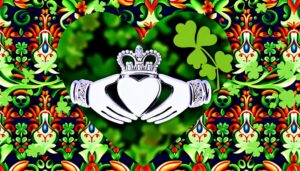Virtues in the Order Eastern Star Symbol Meaning?
The Order of the Eastern Star's symbol—a five-pointed star—holds rich historical and symbolic significance. Each point of the star honors a biblical heroine, such as Adah (self-sacrifice), Ruth (loyalty), Esther (courage), Martha (faith), and Electa (love).
The star's colors further deepen its meaning: blue for fidelity, yellow for wisdom, white for purity, green for growth, and red for courage. Together, these elements symbolize the interconnectedness of moral and spiritual virtues, guiding members in their personal and communal journeys.
For a deeper understanding of these intricate symbols and their roots, explore further into the Order's lore.
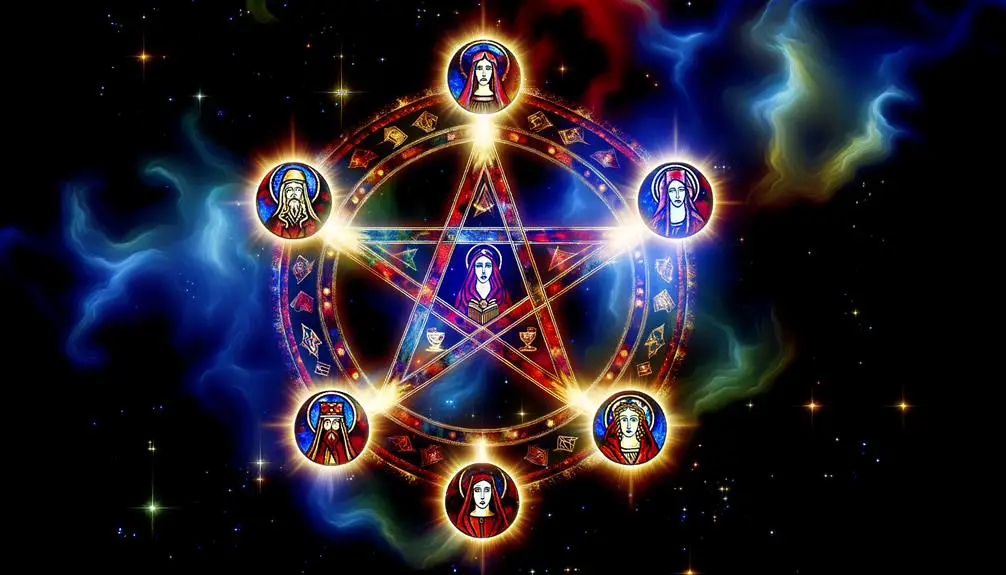
Key Takeaways
- The five-pointed star represents guiding light and interconnectedness of life in Masonic traditions.
- Blue signifies truth, loyalty, and introspective reflection within the Order.
- Yellow symbolizes wisdom, enlightenment, and optimism in the pursuit of knowledge.
- Red is associated with passion, strength, courage, and unwavering dedication.
- Biblical heroines, like Adah and Ruth, embody virtues such as obedience, loyalty, and devotion.
The Five-Pointed Star

The five-pointed star, central to the Order of the Eastern Star, represents not only a guiding light but also encapsulates a rich tapestry of historical and symbolic significance rooted in both biblical and Masonic traditions.
Historically, the star has been a symbol of divine guidance, with each point representing a different virtue: fidelity, constancy, loyalty, faith, and love, drawn from female biblical figures.
In Masonic traditions, the pentagram signifies the interconnectedness of life and the universe.
Symbolically, the star serves as a beacon of moral and spiritual enlightenment, guiding members on their journey toward personal and communal growth. Its dual representation as both a celestial and terrestrial symbol underscores the harmony between the divine and human endeavors, enriching its profound significance.
The Color Blue
The color blue in the Order of the Eastern Star is imbued with profound symbolic representations, often associated with truth, loyalty, and fidelity.
Historically, blue has been a color of great significance, tracing back to ancient civilizations where it was revered as the color of the heavens and the divine.
Its emotional resonance is equally potent, evoking a sense of calm, stability, and introspective reflection, which aligns with the Order's overarching themes of moral virtue and spiritual enlightenment.
Symbolic Representations
Blue, as a key color within the Order of the Eastern Star, symbolizes fidelity and steadfastness, reflecting the organization's commitment to these enduring principles.
Historically, blue has been associated with loyalty and trustworthiness, qualities that are integral to the moral fabric of the Order.
In the symbolic framework of the Eastern Star, blue is often linked to the biblical figure Adah, representing her unwavering devotion and moral rectitude.
The color's deep hue evokes a sense of calm and stability, reinforcing the Order's dedication to sustaining a foundation of ethical consistency.
Historical Significance
Tracing the roots of blue's significance within the Order of the Eastern Star, one discovers its enduring presence in various cultural and religious traditions, where it consistently symbolizes trust, loyalty, and divine favor.
Historically, blue has been associated with the heavens and celestial guidance, reflecting a sense of stability and faithfulness. In ancient Egyptian culture, blue represented the sky and was linked to the gods, signifying protection and eternal life.
Judeo-Christian traditions further imbue blue with sacredness, often depicting the Virgin Mary in blue robes to denote purity and heavenly grace. Within the Order of the Eastern Star, blue encapsulates these rich historical connotations, reinforcing its members' commitment to spiritual ideals and ethical conduct.
Emotional Resonance
Embodying a profound emotional resonance, the color blue within the Order of the Eastern Star elicits feelings of tranquility, introspection, and spiritual depth, rooted in its historical and symbolic connotations. Historically, blue is associated with the heavens and the divine, offering a sense of peace and calm. Symbolically, it represents fidelity and trust, essential virtues in the Order. The emotional impact is further enriched through its use in rituals and ceremonies, fostering a serene and contemplative atmosphere.
| Attribute | Symbolism | Emotional Impact |
|---|---|---|
| Historical | Heavens, Divine | Peace, Calm |
| Symbolic | Fidelity, Trust | Serenity, Contemplation |
| Ritualistic | Ceremonial Use | Spiritual Depth |
| Emotional | Tranquility | Introspection |
This detailed examination underscores the multifaceted significance of blue, enhancing the Order's spiritual fabric.
The Color Yellow
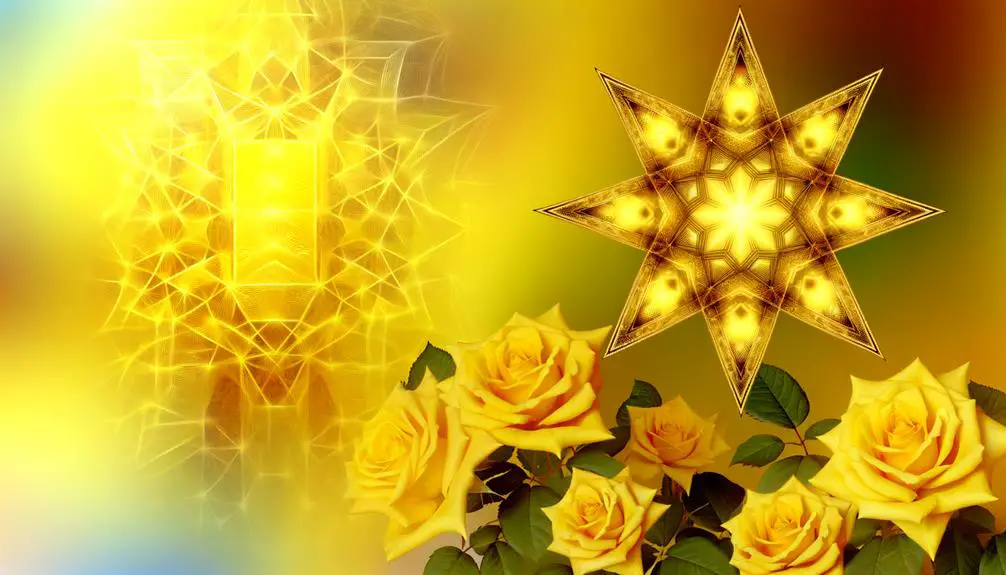
The color yellow in the Order of the Eastern Star is emblematic of wisdom and enlightenment, drawing from ancient traditions where yellow was often associated with intellectual clarity and divine illumination.
Historically, yellow has been linked to spiritual and philosophical pursuits, highlighting its significance in the context of Masonic teachings.
Emotionally, it evokes a sense of optimism and joy, serving as a reminder of the light that knowledge brings into the lives of the members.
Symbolic Representation Explained
Yellow, in the context of the Order of the Eastern Star, symbolizes wisdom and knowledge, reflecting its historical association with enlightenment and intellectual illumination. This color's significance is rooted in its connection to the sun, which has long been a metaphor for clarity and understanding. Yellow's role within the Order is to inspire members towards the pursuit of truth and the sharing of learned insights.
| Aspect | Symbolic Meaning |
|---|---|
| Color | Yellow |
| Symbolizes | Wisdom and Knowledge |
| Historical Context | Association with Enlightenment |
| Metaphor | Sun – Clarity and Understanding |
| Purpose | Inspire pursuit of truth |
This table elucidates yellow's multi-faceted symbolism, underscoring its importance in guiding members towards intellectual growth and moral clarity.
Historical Significance
How has the color yellow evolved to become a symbol of wisdom and knowledge within the Order of the Eastern Star, reflecting its profound historical and cultural significance?
Yellow, traditionally associated with light and intellect, has roots in ancient civilizations where it symbolized divinity and enlightenment. In the context of the Order, this hue represents the biblical figure Adah, who epitomizes fidelity and wisdom.
Historically, yellow's connotation with enlightenment aligns with the Order's values of moral and spiritual education. The use of yellow in the Order's symbology underscores a commitment to the pursuit of knowledge and the illumination of the mind, bridging ancient cultural significances with the Order's aspirations to foster wisdom and understanding among its members.
Emotional Impact
In the domain of color psychology, yellow is often associated with emotional warmth and intellectual stimulation, making it a fitting choice for symbolizing wisdom within the Order of the Eastern Star. Historically, yellow has been linked to enlightenment and knowledge, reflecting the light of understanding in the human spirit. Symbolically, yellow in the Order represents the virtue of wisdom, guiding members to seek knowledge and act judiciously. The emotional impact of yellow extends to fostering a sense of optimism and energy, essential for personal growth and community service.
| Aspect | Meaning | Emotional Impact |
|---|---|---|
| Color Psychology | Warmth, Stimulation | Optimism, Energy |
| Historical Context | Enlightenment, Knowledge | Intellectual Pursuits, Enlightenment |
| Symbolic Interpretation | Wisdom | Guidance, Judiciousness |
The color yellow serves as a multifaceted emblem within the Order, enriching members' emotional and intellectual lives.
The Color White
The color white in the Order of the Eastern Star symbolizes purity, light, and the pursuit of truth, reflecting the organization's commitment to moral and spiritual integrity.
Historically, white has been associated with sanctity and virtue, often used in religious ceremonies to denote holiness and the divine.
Within the Eastern Star, white signifies the aspirational ideals that members aim to embody. Symbolically, it represents an unblemished state, free from corruption and deceit, emphasizing the importance of living a life guided by ethical principles and honesty.
The color white serves as a reminder of the clarity and enlightenment that comes from upholding these values, fostering a sense of unity and shared purpose among members dedicated to virtuous living.
The Color Green
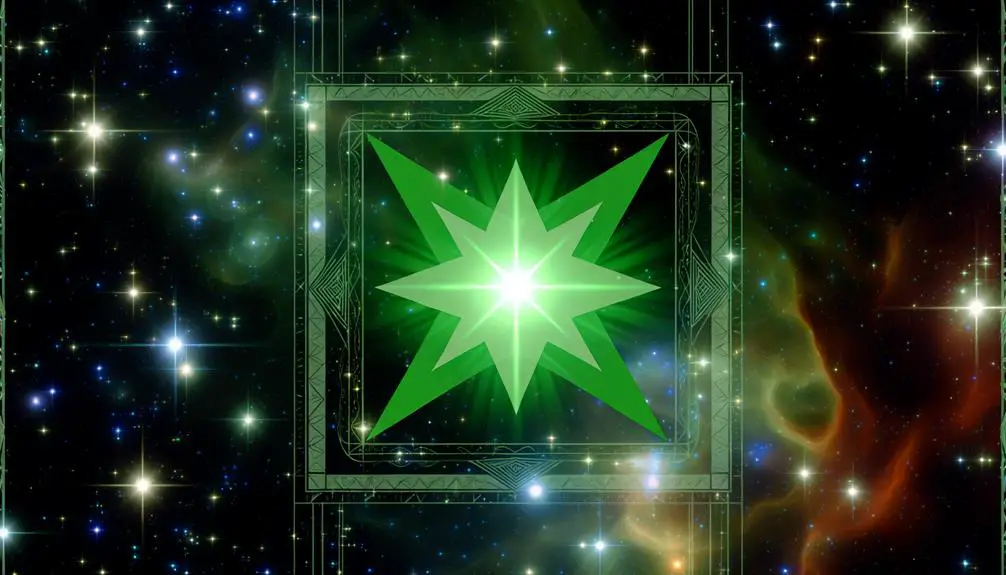
Symbolizing growth, renewal, and fertility, the color green in the Order of the Eastern Star represents the continuous personal and spiritual development that members aim to achieve.
Historically, green has been revered in many cultures for its association with nature and new beginnings, which aligns seamlessly with the Order's emphasis on moral and ethical advancement.
Symbolically, green in the Eastern Star is a reminder of the perpetual cycle of learning and self-improvement. To create vivid imagery:
- Emerging leaves – Representing new knowledge and wisdom.
- Verdant meadows – Symbolizing peace and serenity in one's journey.
- Spring's first bloom – Indicating renewal and fresh starts.
- Evergreen trees – Signifying enduring strength and resilience.
This color encourages members to embrace growth in their spiritual lives.
The Color Red
Frequently associated with passion, strength, and courage, the color red in the Order of the Eastern Star serves as a powerful emblem of the fervent commitment and unwavering dedication members are expected to embody.
Historically, red has been a symbol of sacrifice and valor, tracing its roots back to ancient times where it was used in rituals and heraldry to denote bravery and moral integrity.
In the Eastern Star context, red's symbolic interpretation extends to represent the blood of martyrs and the enduring spirit of perseverance.
This color also underscores a member's readiness to face challenges with a resolute heart, embodying the virtues of loyalty and selfless service, pivotal to the Order's core tenets.
Biblical Heroines and Their Qualities
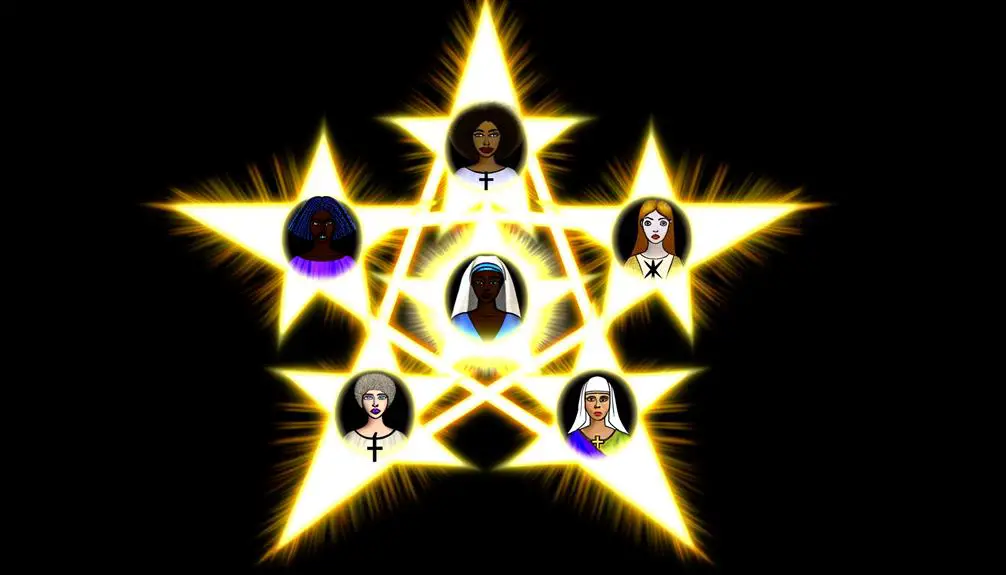
Integral to the Order of the Eastern Star, the Biblical heroines serve as paragons of virtue, each embodying distinct qualities that provide moral and spiritual guidance to the members. These heroines are:
- Adah: Symbolizes obedience and self-sacrifice, as seen in her willingness to honor her father's vow.
- Ruth: Embodies loyalty and devotion, demonstrated through her steadfast support of Naomi and her embrace of a new faith.
- Esther: Represents courage and leadership, risking her life to save her people from persecution.
- Martha: Exemplifies faith and service, known for her unwavering belief in Jesus and her dedicated hospitality.
Each heroine's story enriches the Order's teachings, offering a multifaceted framework for personal and communal growth.
Conclusion
The Order of the Eastern Star's symbolism intricately combines the five-pointed star and its associated colors—blue, yellow, white, green, and red—with the virtues of biblical heroines.
This rich tapestry of symbols and meanings serves to embody the organization's moral and ethical teachings.
Historical context and symbolic interpretation reveal that each element is meticulously chosen to reflect the organization's values and principles.
Investigating whether these interpretations hold true across different cultural and historical contexts could further enrich understanding.



